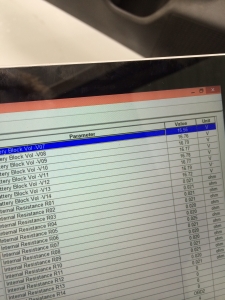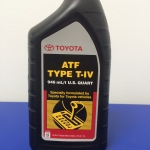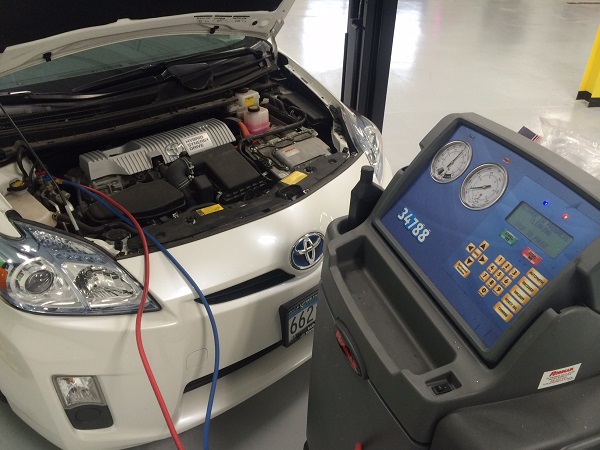CARspec had the opportunity to replace the high voltage traction battery on a 2005 Prius. We documented the process with some photos and explanations of what and why was going on.
The vehicle came to us already diagnosed with a failed HV battery. We re-diagnosed the battery and came to the same conclusion. Pictured above is a readout of the block voltages from the failed battery – note the highlighted row is roughly 1.2 volts lower than those below it. This is considered excessive block voltage variance and is the most frequent cause of battery failure. The battery fan was blowing full speed, the charging and discharging on the display was rapid, and the car had little power. The battery needs to be replaced.
Here is the old battery with the cover off (on the right) next to the new cells (on the left). We’ve disassembled the interior of the vehicle a bit to get to this point. Note the battery on the right has much more going on in the bottom of the photo.
This extra stuff on the right battery is pictured above, now disconnected from the old battery and being swapped onto the new cells. Note all orange wires have the potential to carry high voltage (250+ volts) and require care when being handled. In the photo is the battery control module (silver box), high voltage relays (copper terminals on the right), and additional sensing and safety equipment used to manage and monitor the battery’s many cell blocks. This group both controls the voltage going to a from the battery and keeps track of internal battery temperature and resistance of the cells.
This is a new battery ready to be installed minus the rightmost protective cover. Note the additional safety labels and handling procedures – at this point the battery is not fully connected but is still in need of handling care.
Confirmation of the repair after installing the new cells. Variance between the blocks is narrow and the car now runs and drives like new!









